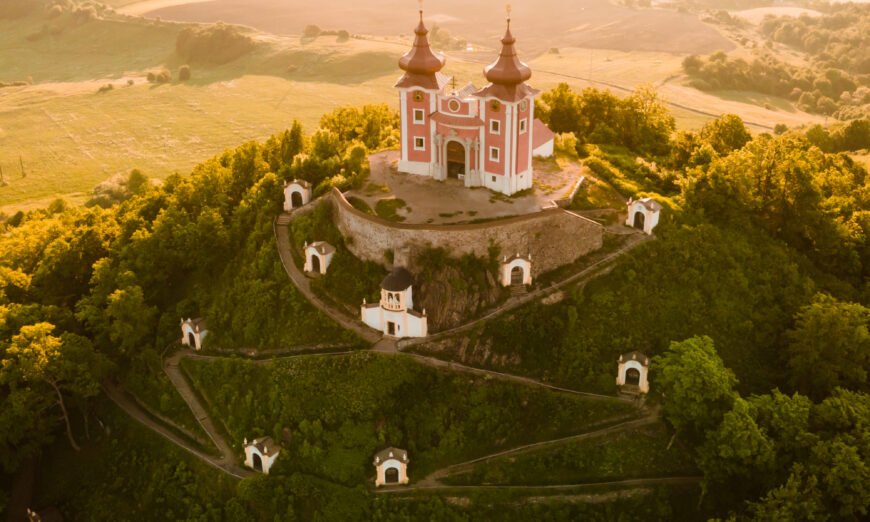Slovakia – a place nestled in the heart of Europe, featured by the renowned Lonely Planet in its TOP ten must-visit destinations for 2025.This small country will surprise and captivate all with its intricate and diverse range of offerings. From stunning natural beauties to rich historical and cultural monuments – Slovakia has it all. Majestic mountains, scenic valleys, and an extensive network of hiking trails and cycling paths.
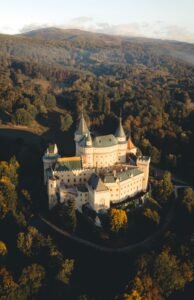 Slovakia will take you to the underground world thanks to unique cave complexes. Water as a healing source will be brought closer with world-famous mineral and thermal springs.
Slovakia will take you to the underground world thanks to unique cave complexes. Water as a healing source will be brought closer with world-famous mineral and thermal springs.
Also unique are Slovak historical and cultural monuments. You will discover castles and ruins in every corner of the country, thanks to wooden churches and open-air museums you will literally be transported back in time.
Every corner of the nation tells a story, steeped in time-honoured traditions, vibrant folklore, artisanal crafts passed down through generations, and UNESCO-recognized living heritage, including famous blueprints, craftsmanship, and falconry.
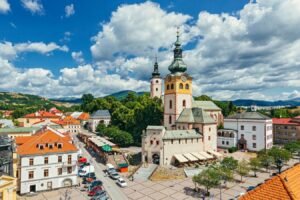 Slovakia is not unknown to Indian visitors. However, the potential for developing inbound tourism from this country is enormous. Last year, more than 12,000 Indians visited Slovakia, which represents a significant, almost a quarter-year-on-year growth. This nearly reached the pre-Covid milestone of 2019.
Slovakia is not unknown to Indian visitors. However, the potential for developing inbound tourism from this country is enormous. Last year, more than 12,000 Indians visited Slovakia, which represents a significant, almost a quarter-year-on-year growth. This nearly reached the pre-Covid milestone of 2019.
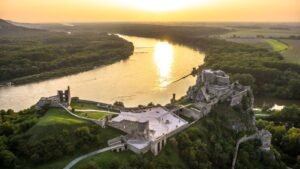 Indian visitors come to Slovakia mainly in June, July, and September, stay for approximately three nights, and most often visit the Bratislava region. The ambition of the national tourism promotion organization SLOVAKIA TRAVEL is to introduce them to other regions, arouse their curiosity and desire to explore Slovakia, inspire them with interesting tips for trips and holidays, and above all, extend a warm invitation to explore all that Slovakia has to offer.
Indian visitors come to Slovakia mainly in June, July, and September, stay for approximately three nights, and most often visit the Bratislava region. The ambition of the national tourism promotion organization SLOVAKIA TRAVEL is to introduce them to other regions, arouse their curiosity and desire to explore Slovakia, inspire them with interesting tips for trips and holidays, and above all, extend a warm invitation to explore all that Slovakia has to offer.
Slovakia is a paradise for both active and relaxing holiday. It provides an abundance of opportunities to spend free days for families with children, seniors, as well as groups of young people or thrill-seekers drawn to activities such as river rafting or via ferrata climbing. Welcomed are also hiking and cycling enthusiasts as well as lovers of castles and museums.
 For those who prefer short walks through the city during their holiday, there are countless local restaurants offering pleasant lunch and numerous cozy cafés in narrow historic streets serving exquisite selection of coffee, tea and sweets. Experience of unparalleled relaxation and rejuvenation is waiting on anybody visiting the renowned Slovak spas and aquaparks.
For those who prefer short walks through the city during their holiday, there are countless local restaurants offering pleasant lunch and numerous cozy cafés in narrow historic streets serving exquisite selection of coffee, tea and sweets. Experience of unparalleled relaxation and rejuvenation is waiting on anybody visiting the renowned Slovak spas and aquaparks.
Rich in culture and history, Slovakia is home to several timeless locations where history seems to stand still. You don’t need to be a history enthusiast to feel the past looming in every corner of the country. Dozens of majestic castles, charming chateaux and manor houses and mysterious ruins,some dating back 700 years. All that and even more can be seen during one vacation.
The country’s unique wooden churches, constructed without a single nail, and open-air museums showcase the rich folk architecture and heritage.
 Nearly sixty wooden churches have been preserved, eight of which are UNESCO World Heritage Sites. These structures are renowned for their exceptional architecture, beautiful Baroque iconostases, rare altars, and mystical frescoes. The oldest wooden church, dating back to the 15th century, stands near the town of Bardejov. It is located on the slope of the village of Hervartov and, despite its age, it´s still very well preserved. The interior of the church has remained almost untouched for centuries.
Nearly sixty wooden churches have been preserved, eight of which are UNESCO World Heritage Sites. These structures are renowned for their exceptional architecture, beautiful Baroque iconostases, rare altars, and mystical frescoes. The oldest wooden church, dating back to the 15th century, stands near the town of Bardejov. It is located on the slope of the village of Hervartov and, despite its age, it´s still very well preserved. The interior of the church has remained almost untouched for centuries.
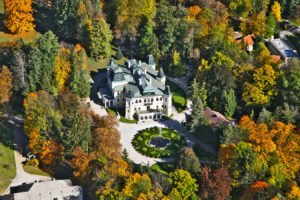 Open-air museums, on the other hand, try to bring the atmosphere of people’s lives in the environment of a historical landscape closer, protecting and preserving, for example, churches, rectories, schools, people’s homes and farm buildings. They are scattered throughout the whole Slovakia, the most visited are those in Turec near Martin, in Kysuce in Vychylovka, in Orava near the village of Zuberecor in Liptov near the village of Pribylina.
Open-air museums, on the other hand, try to bring the atmosphere of people’s lives in the environment of a historical landscape closer, protecting and preserving, for example, churches, rectories, schools, people’s homes and farm buildings. They are scattered throughout the whole Slovakia, the most visited are those in Turec near Martin, in Kysuce in Vychylovka, in Orava near the village of Zuberecor in Liptov near the village of Pribylina.
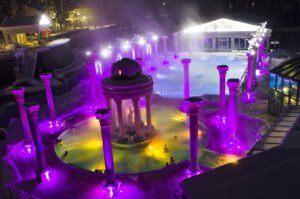 Several other cities or areas in Slovakia are inscribed on the UNESCO World Heritage List due to their unique atmosphere and historical and cultural value. These include Banská Štiavnica and the technical monuments of its surroundings, Levoča, Spiš Castle and the cultural monuments of their surroundings, as well as the Vlkolínec folk architecture reserve, the historical core of the city of Bardejov, the borders of the Roman Empire – the Danube Limes and the Roman military camps (castles) Gerulata in Rusovce and Iža. The living UNESCO heritage in Slovakia is also of incalculable value in the form of the musical instrument fujara, Terchov music, bagpipe culture, Horehron polyphonic singing and puppetry in Slovakia and the Czech Republic. Blueprinting, tinkering, falconry and traditions associated with the breeding of Lipizzaner horses have also been included on this prestigious list.
Several other cities or areas in Slovakia are inscribed on the UNESCO World Heritage List due to their unique atmosphere and historical and cultural value. These include Banská Štiavnica and the technical monuments of its surroundings, Levoča, Spiš Castle and the cultural monuments of their surroundings, as well as the Vlkolínec folk architecture reserve, the historical core of the city of Bardejov, the borders of the Roman Empire – the Danube Limes and the Roman military camps (castles) Gerulata in Rusovce and Iža. The living UNESCO heritage in Slovakia is also of incalculable value in the form of the musical instrument fujara, Terchov music, bagpipe culture, Horehron polyphonic singing and puppetry in Slovakia and the Czech Republic. Blueprinting, tinkering, falconry and traditions associated with the breeding of Lipizzaner horses have also been included on this prestigious list.
When visiting Slovakia, don’t miss several iconic castles that are open to visitors as museums. Exploring can commence in the capital, Bratislava, where two exceptional castleswith significant history may be discovered.
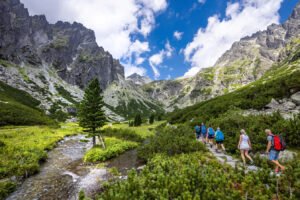 The first one is hard to miss. Looking over the capital´s historic centre, Bratislava Castle, is easily recognisable by its silhouette with four corner towers and history filled with many famous coronations. Hidden in the midst of its Crown Tower, precious coronation jewels are waiting for those willing to explore the castle. Reaching the castle grounds, you will be awarded with an exceptional view of the entire metropolis, including its historical centre filled with various turrets of old churches, as well as the panorama of the modern district – downtown with new skyscrapers.
The first one is hard to miss. Looking over the capital´s historic centre, Bratislava Castle, is easily recognisable by its silhouette with four corner towers and history filled with many famous coronations. Hidden in the midst of its Crown Tower, precious coronation jewels are waiting for those willing to explore the castle. Reaching the castle grounds, you will be awarded with an exceptional view of the entire metropolis, including its historical centre filled with various turrets of old churches, as well as the panorama of the modern district – downtown with new skyscrapers.
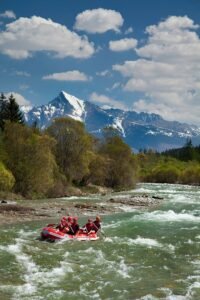 Devín Castle is the second castle located directly in the capital of Slovakia. Unique for its antiquity, it will also impress the visitors with its location within picturesque nature, situated above the confluence of two rivers – the Morava and the Danube. In addition to the fact that the castle is significant for national history, it is flourishing with rare, protected flora and fauna.
Devín Castle is the second castle located directly in the capital of Slovakia. Unique for its antiquity, it will also impress the visitors with its location within picturesque nature, situated above the confluence of two rivers – the Morava and the Danube. In addition to the fact that the castle is significant for national history, it is flourishing with rare, protected flora and fauna.
Moving slowly from the capital in the eastern direction, an epitome of the quintessential fairytale castle, Bojnice Castle, will take your breath away. Its interior is dominated by the resplendent Golden Hall, named for its gilded ceiling. The castle also boasts exceptional natural features, including a travertine cave beneath it. In the surrounding historical park, visitors can marvel at a massive linden tree, said to have been growing there since 1301.
Sitting on a sharp rock overlooking the Orava River, another distinctive castle, Orava Castle, is waiting for tourists in the northern part of Slovakia. Featuring 154 rooms and a mix of historical architectural styles, it is popular with filmmakers and hosts an exhibition dedicated to movies and fairy tales shot there. The oldest and the most famous is the black-and-white, silent horror film “Nosferatu the Vampire”, which was filmed here over 100 years ago.
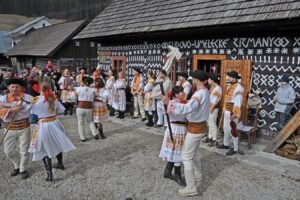 Last, but not least, when visiting Slovakia, you cannot miss Spiš Castle. One of the largest medieval castles in the Central Europe, it amazes not only by its size but is also priding itself on being on the UNESCO World Heritage List for over 30 years. Included in the list are also unique sites in its vicinity, the historic town of Spišské Podhradie and the ancient Gothic church in Žehra, displaying rare wall paintings in its interior.
Last, but not least, when visiting Slovakia, you cannot miss Spiš Castle. One of the largest medieval castles in the Central Europe, it amazes not only by its size but is also priding itself on being on the UNESCO World Heritage List for over 30 years. Included in the list are also unique sites in its vicinity, the historic town of Spišské Podhradie and the ancient Gothic church in Žehra, displaying rare wall paintings in its interior.
Beyond countless castles, Slovakia offers a wealth of different mansions, monasteries, museums, and galleries that seamlessly blend history and fine arts with modern technologies, providing visitors with truly exceptional interactive exhibitions.
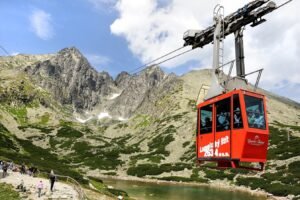 Notable examples include the Draškovič Mansion near Čachtice, where bloody countess herself tells her incredible story from talking picture frame as well as the monastery “Červený kláštor” in the Pieniny region featuring many different interactive activities. Creative museum Littera in Revúca will surprise tourists with a journey through the stories of words, writing, images, and even the stars, divided into four thematic pavilions.Additionally, near the capital, the Čuňovo Ecocenterwill bring natural heritage of Bratislava region close to all visitors.
Notable examples include the Draškovič Mansion near Čachtice, where bloody countess herself tells her incredible story from talking picture frame as well as the monastery “Červený kláštor” in the Pieniny region featuring many different interactive activities. Creative museum Littera in Revúca will surprise tourists with a journey through the stories of words, writing, images, and even the stars, divided into four thematic pavilions.Additionally, near the capital, the Čuňovo Ecocenterwill bring natural heritage of Bratislava region close to all visitors.
Although several areas of these exhibitions are dedicated mostly to children, their playfulness and elaborate tours will certainly interest adults as well.
When visiting Slovakia, tourist will appreciate its size. In a matter of few hours, you can travel from west to east or from south to north. Therefore, seeing both historic and natural wonders in short period of time is not an issue. So, for those who crave more active vacations, there is plenty to choose from.
 9 national parks, a million hectares of protected areas and the densest network of hiking trails in Europe, that is Slovakia. More than 14,000 kilometres of marked trails are waiting for all tourists interested in exploring nature. Safe accessis secured for both beginners and experienced mountaineers.
9 national parks, a million hectares of protected areas and the densest network of hiking trails in Europe, that is Slovakia. More than 14,000 kilometres of marked trails are waiting for all tourists interested in exploring nature. Safe accessis secured for both beginners and experienced mountaineers.
Everybody is enchanted by the smallest high mountains in the world – the High Tatras. The main ridge is 26 kilometres long and for many, climbing one of the 50 Tatra peaks with a height of over 2,000 meters above sea level can be an experience of a lifetime. You should definitely not miss the iconic Lomnický Peak, which is the second highest peak in the Tatra National Park. A cable car will comfortably take you to the heights, and the more daring can try climbing the peak accompanied by a mountain guide. If you want to experience a truly exclusive experience and the most beautiful views, you can even spend the night on Lomnický Peak.
However, hiking in Slovakia isn´t just about conquering the mountains and admiring the meadows in the High Tatras. Numerous exceptional trails can be found, such as those in the Slovak Paradise, with the national tourism promotion organization SLOVAKIA TRAVEL highly recommending the hike to the Tomášovský Viewpoint. It is extremely popular thanks to the unique scenery but also because of the easy nature of the trail. The rock walls attract many climbers and climbing enthusiasts.
Even if you’re new to hiking, you can enjoy an easy yet beautiful trail, like the one in the Malá Fatra National Park. There, an educational path leads to the fourth highest waterfall in Slovakia – the Šútovský Waterfall. Thanks to its accessibility, this trail is popular among occasional hikers, families with small children, and seniors.
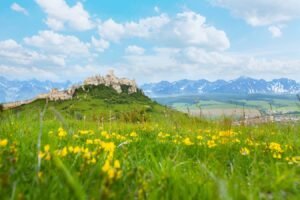 The perfect place for summer hiking is the Jánošík Holes in the Rozsutec National Nature Reserve. The route will take you between the rocks along a system of iron ladders, footbridges and bridges, which in some cases are also equipped with railings in the form of chains.
The perfect place for summer hiking is the Jánošík Holes in the Rozsutec National Nature Reserve. The route will take you between the rocks along a system of iron ladders, footbridges and bridges, which in some cases are also equipped with railings in the form of chains.
Those seeking more challenging climbs will be drawn to the most interesting yet demanding route in the Western Tatras, leading to Roháče. This area is dominated by the pointed peaks of Baníkov and OstrýRoháč, resembling devil’s horns.
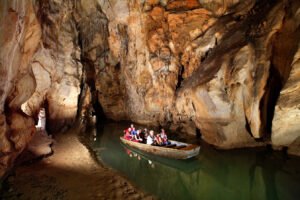 A popular form of tourism for those who want to experience a little more adrenaline in the mountains are via ferratas. This is a hiking route in difficult-to-reach mountain terrain, which is equipped with fixed safety elements such as ropes, steps, ladders or footbridges. You can also find several of them in Slovakia. The via ferrata at Martinské hole was the first real alpine via ferrata in Slovakia, the most popular and most visited is the via ferrata Skalka near Kremnica, which also includes the most difficult via ferrata route in Slovakia.
A popular form of tourism for those who want to experience a little more adrenaline in the mountains are via ferratas. This is a hiking route in difficult-to-reach mountain terrain, which is equipped with fixed safety elements such as ropes, steps, ladders or footbridges. You can also find several of them in Slovakia. The via ferrata at Martinské hole was the first real alpine via ferrata in Slovakia, the most popular and most visited is the via ferrata Skalka near Kremnica, which also includes the most difficult via ferrata route in Slovakia.
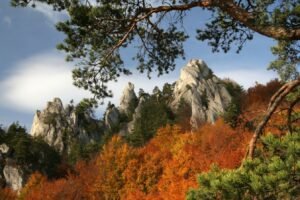 Slovakia also offers countless opportunities for sports enthusiasts. If you are interested in exploring the country from the seat of a bicycle, more than 50 official cycle routes and hundreds of cycle trails await you. Water lovers in the Pieniny Mountains can try rafting on wooden rafts on the waters of the Dunajec River, while the more daring can choose a raft and float 7.5 kilometres of the white water of the Belá River in the foothills of the Tatra Mountains. Several famous Slovak rivers, including the Váh, Dunajec, Malý Dunaj, and Hron, offer rafting opportunities.
Slovakia also offers countless opportunities for sports enthusiasts. If you are interested in exploring the country from the seat of a bicycle, more than 50 official cycle routes and hundreds of cycle trails await you. Water lovers in the Pieniny Mountains can try rafting on wooden rafts on the waters of the Dunajec River, while the more daring can choose a raft and float 7.5 kilometres of the white water of the Belá River in the foothills of the Tatra Mountains. Several famous Slovak rivers, including the Váh, Dunajec, Malý Dunaj, and Hron, offer rafting opportunities.
Slovakia is home to other unique natural treasure as well. It is one of the darkest places in Europe thanks to the Poloniny and Murány Parks, where it is possible to observe the night sky as our ancestors saw it – without light pollution. Our mountains are also home to several rare species of animals, such as chamois, bears, mice, marmots, wolves and otters. You can also find the last generation of European bison here – the European bison. Old beech forests and primeval beech forests of the Carpathians, which are listed as UNESCO World Cultural Heritage Sites, also extend into the territory of Slovakia.
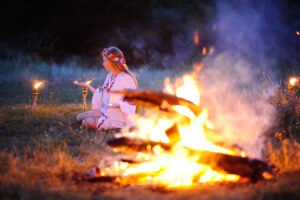 To add more, we are also renowned for our captivating caves.People may not know this, but Slovakia is considered to be the country with the largest number of caves per capita in Europe. In total, there are over 7,000 of them, 18 of which are accessible. The caves of the Slovak Karst and Aggteleki-karsztare included in the UNESCO World Natural Heritage List. Among the caves that tourists can visit are, for example, the only accessible cave in the High Tatras – Belianska Cave, the most famous and longest cave of the Slovak Karst National Park – Domica, and the only accessible cave in western Slovakia – Driny. The Ochtinská Aragonite Cave is unique, attracting attention with the richness and diversity of its aragonite filling. It is only 300 meters long, but its decoration is still one of the rarest in the world. It is one of its kind in Europe, and there are only three in the whole worldapart from Slovakia, only in Mexico and Argentina.
To add more, we are also renowned for our captivating caves.People may not know this, but Slovakia is considered to be the country with the largest number of caves per capita in Europe. In total, there are over 7,000 of them, 18 of which are accessible. The caves of the Slovak Karst and Aggteleki-karsztare included in the UNESCO World Natural Heritage List. Among the caves that tourists can visit are, for example, the only accessible cave in the High Tatras – Belianska Cave, the most famous and longest cave of the Slovak Karst National Park – Domica, and the only accessible cave in western Slovakia – Driny. The Ochtinská Aragonite Cave is unique, attracting attention with the richness and diversity of its aragonite filling. It is only 300 meters long, but its decoration is still one of the rarest in the world. It is one of its kind in Europe, and there are only three in the whole worldapart from Slovakia, only in Mexico and Argentina.
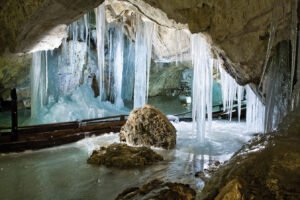 Last, but not least, you cannot leave Slovakia without visiting one of our globally renowned mineral and thermal springs. There are approximately 2,000 of them, and from that reason, it´s not hard to reach at least one during your vacation. Thanks to these natural wonders, many famous spas had been developed in locations such as Piešťany, Rajecké Teplice, Trenčianske Teplice, and Turčianske Teplice, as well as in Dudince and Bardejov. Currently, there are 31 spa facilities in 21 designated spa towns that offer official spa treatments. Some of these spas can even transport you to the ancient Orient. Their history dates back to the Roman Empire, and there is even a unique cave steam bath within the country.
Last, but not least, you cannot leave Slovakia without visiting one of our globally renowned mineral and thermal springs. There are approximately 2,000 of them, and from that reason, it´s not hard to reach at least one during your vacation. Thanks to these natural wonders, many famous spas had been developed in locations such as Piešťany, Rajecké Teplice, Trenčianske Teplice, and Turčianske Teplice, as well as in Dudince and Bardejov. Currently, there are 31 spa facilities in 21 designated spa towns that offer official spa treatments. Some of these spas can even transport you to the ancient Orient. Their history dates back to the Roman Empire, and there is even a unique cave steam bath within the country.
The largest and most important thermal baths in Slovakia can be found in Piešťany, famous for two procedures: the thermal bath in Zrkadlisko and the mud bath in Bahnisko. These spas have a rich history tied to the Art Nouveau painter Alfons Mucha, who frequently visited. One of the spa hotels even displays his oil painting.
In the Trenčianske Teplice Spa, you will discover a Hammam in an oriental Moorish style, while Sklené Teplice offer a unique cave steam bath called “Parenica” with a temperature of 42°C. Turčianske Teplice are famous for their distinctive treatment where gold flakes are applied to the body and face, enhancing regeneration and rejuvenation, amplified by the local mineral water.
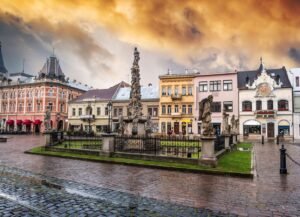 The medicinal water in the Dudince spa has a similar composition to the iconic Vichy Spring, known to locals for over 2,000 years. Evidence includes so-called Roman baths, and 32 small bathtubs carved into travertine rock, likely used by Roman soldiers.
The medicinal water in the Dudince spa has a similar composition to the iconic Vichy Spring, known to locals for over 2,000 years. Evidence includes so-called Roman baths, and 32 small bathtubs carved into travertine rock, likely used by Roman soldiers.
If you are one of those people craving more city adventure, other than capital Bratislava worth visiting include cities Trnava, also nicknamed “Little Rome,” or Trenčín, which won the title of European Capital of Culture in 2026.

